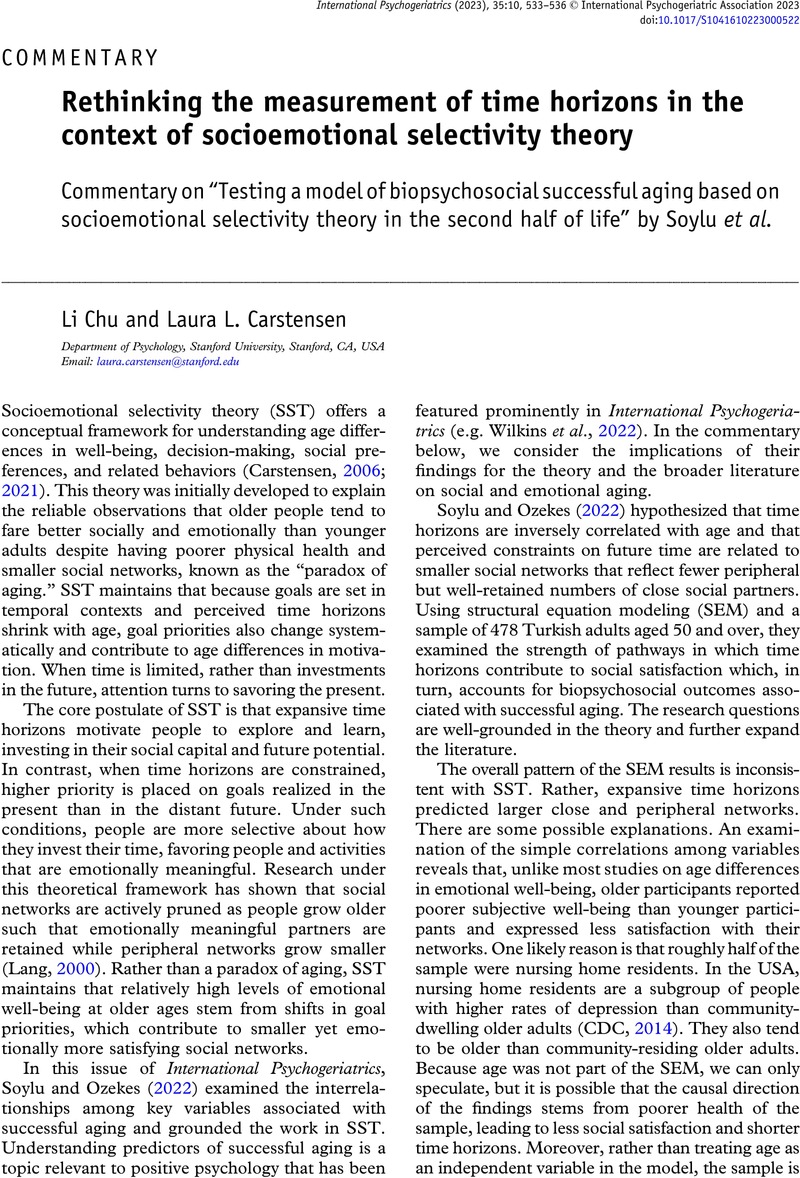Crossref Citations
This article has been cited by the following publications. This list is generated based on data provided by Crossref.
El Haj, Mohamad
Boutoleau-Bretonnière, Claire
and
Chapelet, Guillaume
2023.
The Pupil Knows: Pupil Dilation Indexes and Their Inhibitory Ability in Normal Aging.
Journal of Clinical Medicine,
Vol. 12,
Issue. 14,
p.
4778.
Wirth, Maria
Wettstein, Markus
and
Rothermund, Klaus
2024.
Longitudinal associations between time perspective and life satisfaction across adulthood.
Communications Psychology,
Vol. 2,
Issue. 1,
Nagel, Laura Carlotta
Tesky, Valentina A.
Schall, Arthur
Müller, Tanja
König, Jochem
Pantel, Johannes
and
Stangier, Ulrich
2024.
Compliance with CBT referral in nursing home residents diagnosed with depression: Results from a feasibility study.
Heliyon,
Vol. 10,
Issue. 1,
p.
e23379.
Man, Gabriela-Maria
Popa, Radu-Ioan
and
Man, Mihaela
2024.
Blaming the young is always more accessible rather than accusing the older employees: an experimental view over age and health in organizations.
Frontiers in Psychology,
Vol. 15,
Issue. ,



